Healthcare apparel company Figs (NYSE:FIGS) fell short of analysts' expectations in Q4 FY2023, with revenue flat year on year at $144.9 million. It made a non-GAAP profit of $0.05 per share, improving from its profit of $0.05 per share in the same quarter last year.
Figs (FIGS) Q4 FY2023 Highlights:
- Revenue: $144.9 million vs analyst estimates of $149.1 million (2.8% miss)
- EPS (non-GAAP): $0.05 vs analyst estimates of $0.02 ($0.03 beat)
- Free Cash Flow of $13.65 million, down 70.3% from the previous quarter
- Gross Margin (GAAP): 67.5%, down from 68.2% in the same quarter last year
- Active Customers: 2.6 million
- Market Capitalization: $887.7 million
Rising to fame via TikTok and founded in 2013 by Heather Hasson and Trina Spear, Figs (NYSE:FIGS) is a healthcare apparel company known for its stylish approach to medical attire.
Before Figs, most medical scrubs were unisex, uncomfortable, and lacked style. Figs changed this by introducing scrubs that not only met the practical demands of healthcare professionals but also provided a modern, tailored fit and aesthetic appeal. This focus on design, comfort, and functionality quickly resonated with medical professionals.
The company's product line includes scrubs, lab coats, and other medical apparel accessories designed for men and women. Figs’s products stand out due to their proprietary fabric technology, which is antimicrobial, wrinkle-resistant, moisture-wicking, and highly durable.
Figs operates on a direct-to-consumer model, primarily selling its products online, allowing the company to maintain control over its brand experience, customer service, and pricing strategy. The direct-to-consumer model also enables Figs to build a community with its customer base bolstered by engagement through social media and other digital platforms.
Figs's growth strategy includes expanding its product line, entering new markets, and building on its brand presence.
Apparel, Accessories and Luxury Goods
Within apparel and accessories, not only do styles change more frequently today than decades past as fads travel through social media and the internet but consumers are also shifting the way they buy their goods, favoring omnichannel and e-commerce experiences. Some apparel, accessories, and luxury goods companies have made concerted efforts to adapt while those who are slower to move may fall behind.
Figs's primary competitors include Dickies Medical (owned by VF Corp NYSE:VFC) and private companies Cherokee Uniforms, Barco Uniforms, Scrubs & Beyond, and Medline Industries.Sales Growth
A company’s long-term performance can give signals about its business quality. Even a bad business can shine for one or two quarters, but a top-tier one may grow for years. Figs's annualized revenue growth rate of 49.1% over the last four years was incredible for a consumer discretionary business. 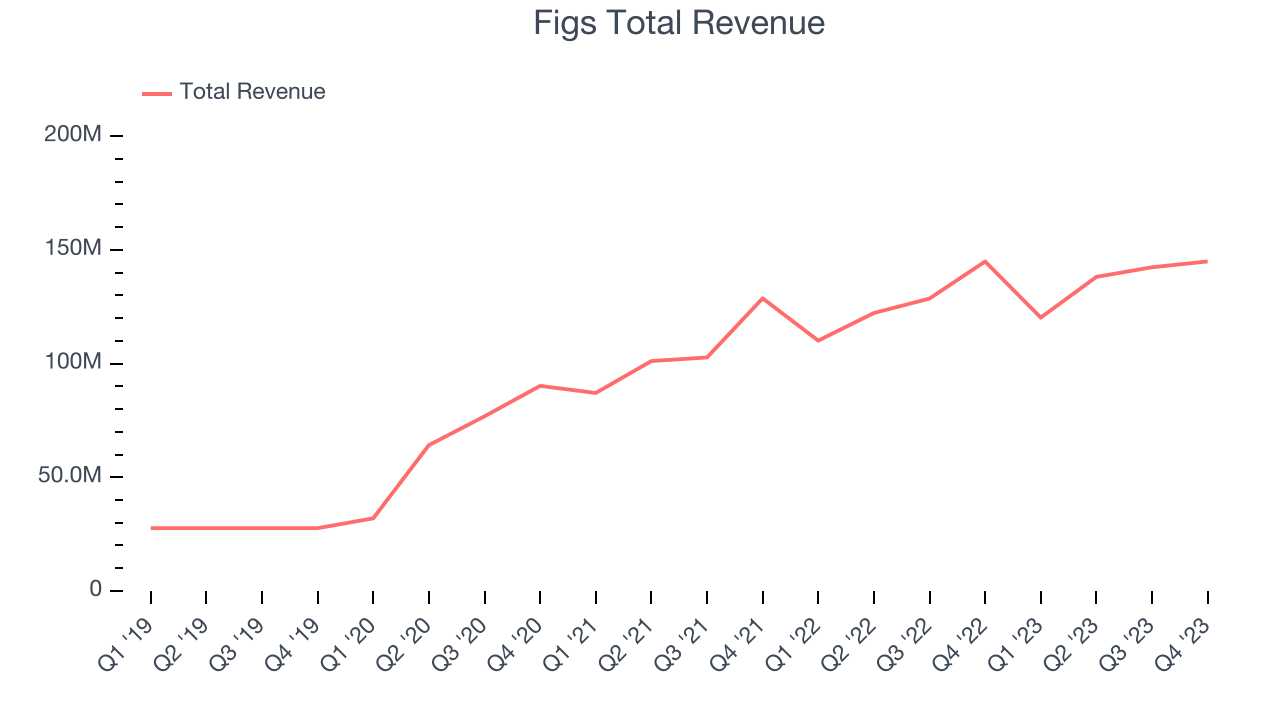 Within consumer discretionary, a long-term historical view may miss a company riding a successful new product or emerging trend. That's why we also follow short-term performance. Figs's recent history shows its momentum has slowed as its annualized revenue growth of 14% over the last two years is below its four-year trend.
Within consumer discretionary, a long-term historical view may miss a company riding a successful new product or emerging trend. That's why we also follow short-term performance. Figs's recent history shows its momentum has slowed as its annualized revenue growth of 14% over the last two years is below its four-year trend.
We can better understand the company's revenue dynamics by analyzing its number of active customers, which reached 2.6 million in the latest quarter. Over the last two years, Figs's active customers averaged 22.4% year-on-year growth. Because this number is higher than its revenue growth during the same period, we can see the company's monetization has fallen. 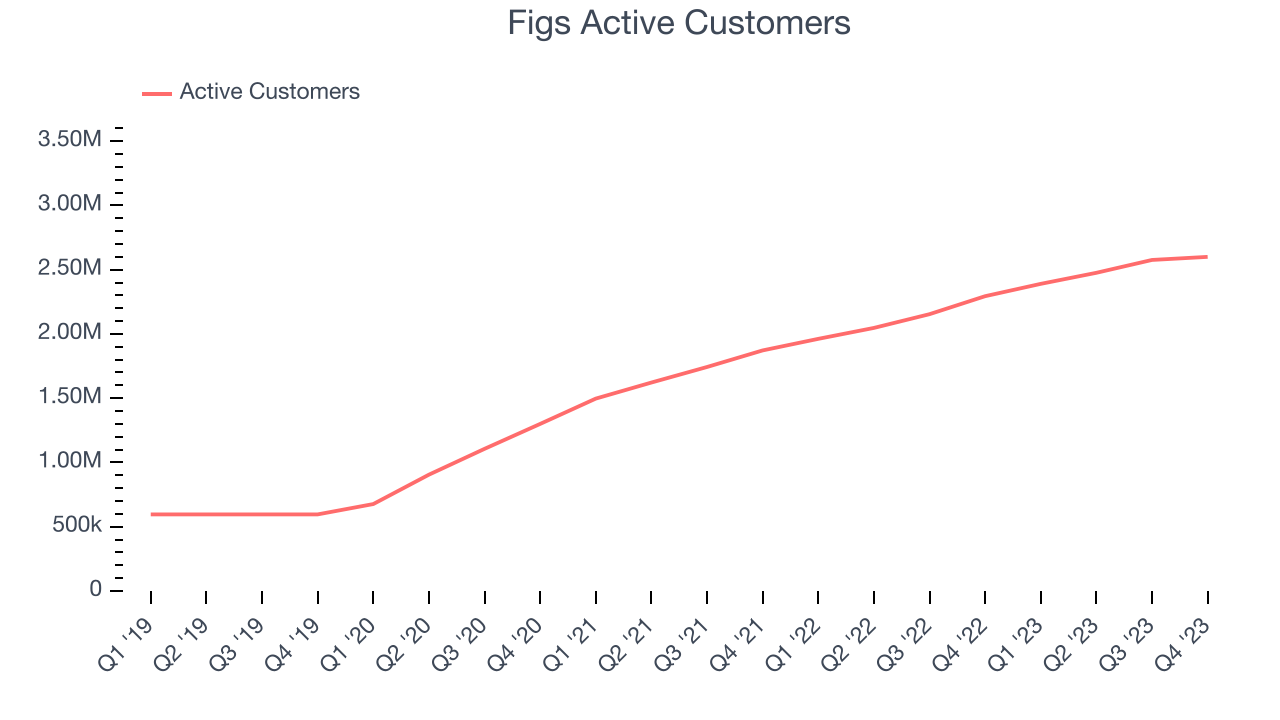
This quarter, Figs's $144.9 million of revenue was flat year on year, falling short of Wall Street's estimates. Looking ahead, Wall Street expects sales to grow 9.9% over the next 12 months, an acceleration from this quarter.
Operating Margin
Operating margin is a key measure of profitability. Think of it as net income–the bottom line–excluding the impact of taxes and interest on debt, which are less connected to business fundamentals.
Figs was profitable over the last eight quarters but held back by its large expense base. It's demonstrated subpar profitability for a consumer discretionary business, producing an average operating margin of 6.8%.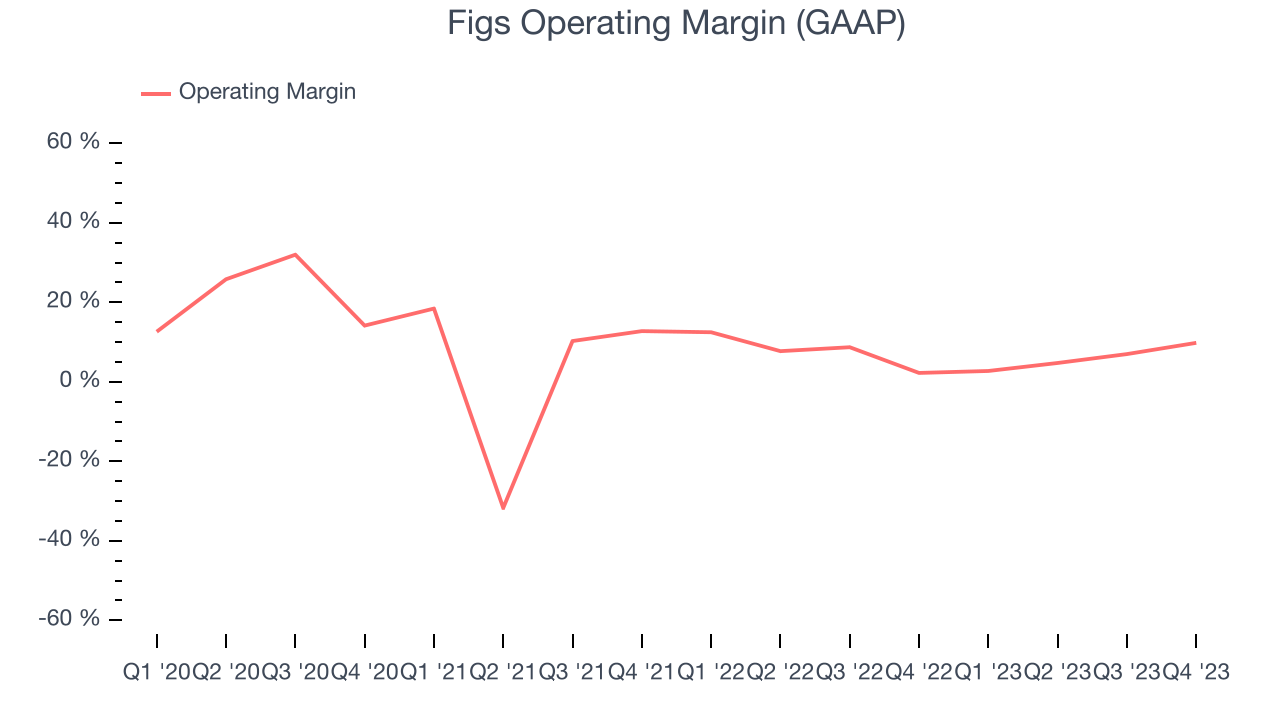
This quarter, Figs generated an operating profit margin of 9.8%, up 7.6 percentage points year on year.
Over the next 12 months, Wall Street expects Figs to become less profitable. Analysts are expecting the company’s LTM operating margin of 6.2% to decline to 4.7%.EPS
We track long-term historical earnings per share (EPS) growth for the same reason as long-term revenue growth. Compared to revenue, however, EPS highlights whether a company's growth was profitable. 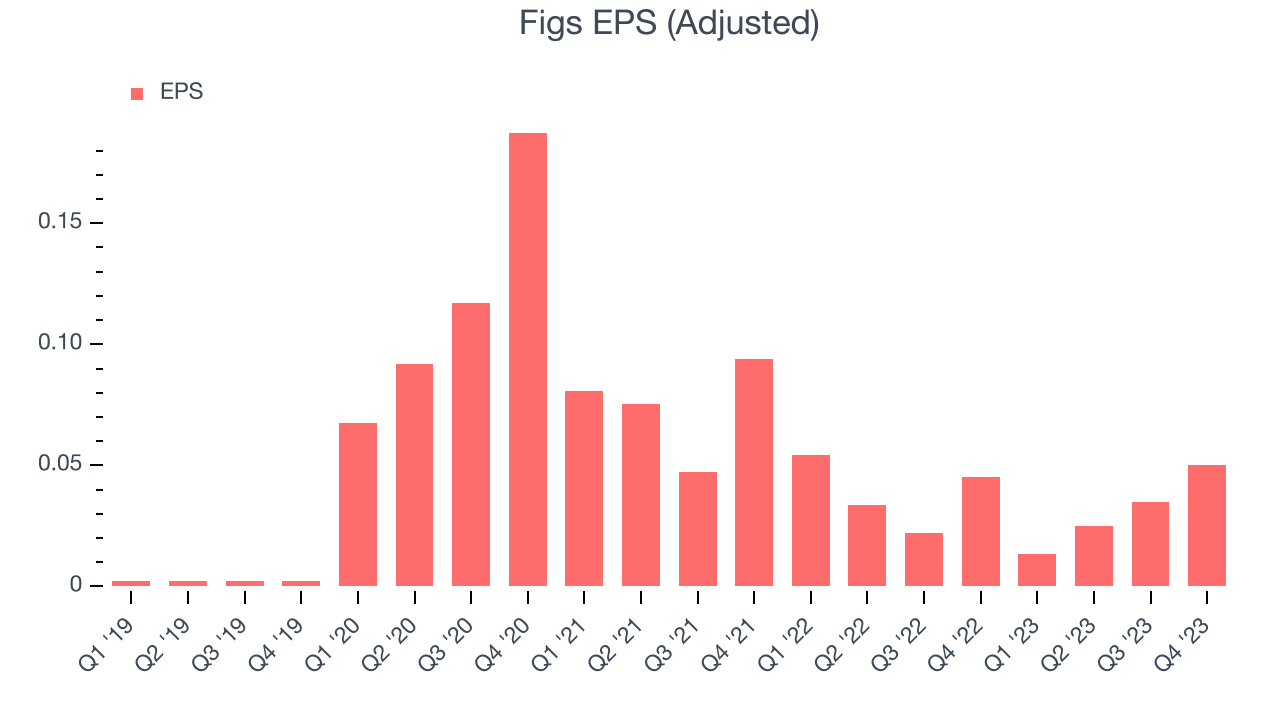
Over the last four years, Figs's EPS grew 1,409%, translating into an astounding 97.1% compounded annual growth rate.
In Q4, Figs reported EPS at $0.05, up from $0.05 in the same quarter a year ago. This print easily cleared analysts' estimates, and shareholders should be content with the results. Over the next 12 months, Wall Street expects Figs to perform poorly. Analysts are projecting its LTM EPS of $0.12 to shrink by 3.6% to $0.12.
Cash Is King
If you've followed StockStory for a while, you know we emphasize free cash flow. Why, you ask? We believe that in the end, cash is king, and you can't use accounting profits to pay the bills.
Over the last two years, Figs has shown mediocre cash profitability, putting it in a pinch as it gives the company limited opportunities to reinvest, pay down debt, or return capital to shareholders. Its free cash flow margin has averaged 4.2%, subpar for a consumer discretionary business.
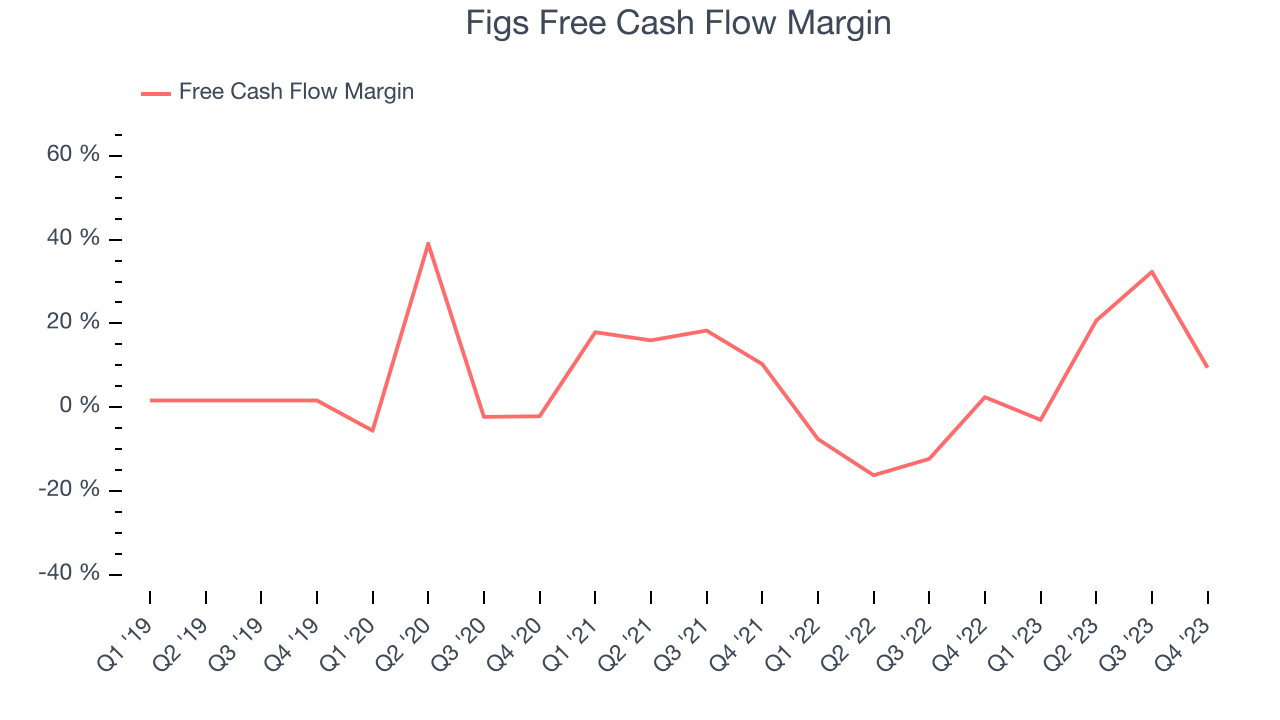
Figs's free cash flow came in at $13.65 million in Q4, equivalent to a 9.4% margin and up 295% year on year. Over the next year, analysts predict Figs's cash profitability will fall. Their consensus estimates imply its LTM free cash flow margin of 15.5% will decrease to 3.5%.
Return on Invested Capital (ROIC)
EPS and free cash flow tell us whether a company was profitable while growing revenue. But was it capital-efficient? A company’s ROIC explains this by showing how much operating profit a company makes compared to how much money the business raised (debt and equity).
Figs's five-year average return on invested capital was 1.6%, somewhat low compared to the best consumer discretionary companies that pump out 25%+. Its returns suggest it historically did a subpar job investing in profitable business initiatives.
Key Takeaways from Figs's Q4 Results
We were impressed by how significantly Figs blew past analysts' EPS expectations this quarter. We were also excited its operating margin outperformed Wall Street's estimates. On the other hand, its revenue unfortunately missed and its number of active customers fell short of Wall Street's estimates. Overall, we think this was still a strong quarter that should satisfy shareholders. The stock is flat after reporting and currently trades at $5.27 per share.
Is Now The Time?
Figs may have had a favorable quarter, but investors should also consider its valuation and business qualities when assessing the investment opportunity.
We cheer for all companies serving consumers, but in the case of Figs, we'll be cheering from the sidelines. Although its revenue growth has been exceptional over the last four years, its relatively low ROIC suggests it has historically struggled to find compelling business opportunities. And while its EPS growth over the last four years has been fantastic, the downside is its projected EPS for the next year is lacking.
Figs's price-to-earnings ratio based on the next 12 months is 44.2x. While we've no doubt one can find things to like about Figs, we think there are better opportunities elsewhere in the market. We don't see many reasons to get involved at the moment.
Wall Street analysts covering the company had a one-year price target of $8.53 per share right before these results (compared to the current share price of $5.27).
To get the best start with StockStory, check out our most recent stock picks, and then sign up for our earnings alerts by adding companies to your watchlist here. We typically have the quarterly earnings results analyzed within seconds of the data being released, and especially for companies reporting pre-market, this often gives investors the chance to react to the results before the market has fully absorbed the information.
